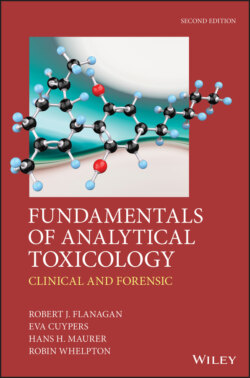Читать книгу Fundamentals of Analytical Toxicology - Robin Whelpton - Страница 71
2.3.17 Keratinaceous tissues (hair and nail)
ОглавлениеHair and nail may be useful for detecting exposure to poisons that may have been eliminated from other commonly sampled fluids and tissues before the hair sample was collected (Section 18.5). Hair may also survive longer after burial than other tissues. If a single exposure to a poison is suspected, as in drug-facilitated sexual assault (DFSA, date rape), but the suspected agent is not detected in blood or urine, waiting for 1–2 months for head hair to grow and then performing segmental analysis may reveal the presence of the drug (head hair on average grows at the rate of 1 cm per month).
Head hair (a bunch of hairs the thickness of a pencil, ca. 100–200 hairs) should be either plucked in the case of a deceased person, or tied at the root end with cotton thread and then cut ca. 2 mm from the scalp at the vertex posterior (crown) of the head (Box 2.3; Figure 2.2), making sure the scissors are level with the scalp and not at an angle. Tying with thread helps preserve the alignment necessary for segmental analysis. The sample should be laid aligned in aluminium foil, with the proximal end clearly identified. Pubic or axillary hair may be substituted if no head hair remains, or if the head hair has been excessively bleached or permed, which tends to destroy sequestered drug, but the ability to perform segmental analysis is lost.
